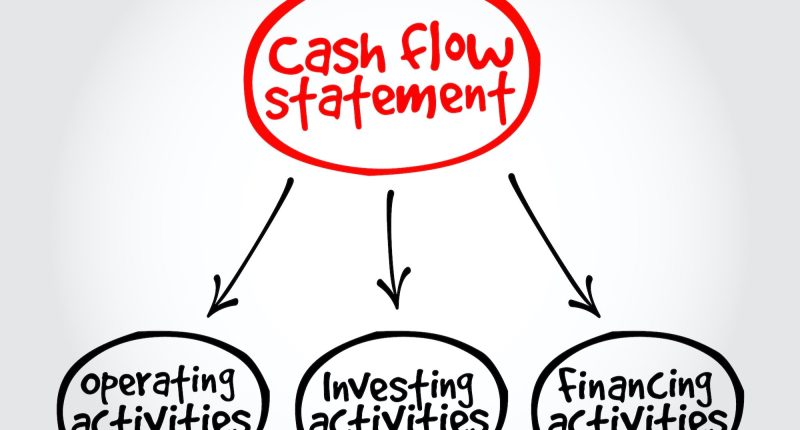
The cash flow statement monitors the flow of cash over a period of time (a year, a quarter, a month) and shows you how much cash you have on hand at the moment.
The cash flow statement, also called the statement of changes in financial position, probes and analyzes changes that have occurred on the balance sheet. It’s different from the income statement, which describes sales and profits but doesn’t necessarily tell you where your cash came from or how it’s being used.
A cash flow statement consists of two parts. One follows the flow of cash into and out of the company. The other shows how the funds were spent. The two parts are called, respectively, sources of funds and uses of funds. At the bottom is, naturally, the bottom line, called net changes in cash position. It shows whether you improved your cash position and by how much during the period.
You Can Be Profitable and Cash Poor at the Same Time
Noah Parsons writes in 5 Tips for More Accurate and Useful Cash Flow Forecasts: “Remember, profits aren’t the same as cash. Profitable companies can run out of cash, and they frequently do because of poor cash flow planning. Here’s a very quick explanation of why this occurs:
When your business makes a sale to a customer, but that customer takes 30 or even 60 days to pay their bill, the amount of the sale does show up on the Profit and Loss Statement (also called a P&L or income statement), potentially increasing your profits. But that cash doesn’t show up in your bank account until the customer actually pays you. So, your business could make a lot of sales and be profitable, but at the same time be low on cash because customers haven’t actually paid for their products or services yet.”
Sources of Funds
Sources of funds usually has two main sections in it. The first shows cash from sales or other operations. In the cash flow statement, this figure represents all the money you collected from accounts during this period. It may include all the sales you booked during the period, plus some collections on sales that actually closed earlier.
The other category of sources of funds includes interest income, if any, plus the proceeds from any loans, line of credit drawdowns, or capital received from investors during the period. Again, these figures represent money actually received during the period. If you arranged for a $100,000 line of credit but only used $10,000 during this period, your sources of funds would show $10,000.
Uses of Funds
The sources of funds section often has only a few entries, although some cash statements break out sources of funds by businesses and product lines. But even simple statements show several uses of funds. A cash flow statement will normally show uses such as cost of goods sold; sales, general, and administrative expense (SG&A); and any equipment purchases, interest payments, payments on principal amounts of loans, and dividends or draws taken by the owners.
Net Change in Cash
Few things feel better for a startup businessperson than having plenty of cash in the bank. And few things offer a better picture of what’s going on with cash on hand than the net change in cash line on your business plan. Net change in cash equals the difference between total funds in and total funds out. If you bring in $1 million and send out $900,000, your net change in cash is $100,000. Ideally, you want this number to be positive and, if possible, showing an upward trend.
The Problem With Too Much Cash
Is it possible to have too much cash? In fact, it is. If your cash is simply sitting in a bank account, it may be drawing little or no interest. In a typical inflationary environment, it will often lose purchasing power from one day to the next. If you have large amounts of cash and nothing to do with it, consider reinvesting in your company—or perhaps another.
Other Financial Information
If you’re seeking investors for your company, you’ll probably need to provide quite a bit more financial information than what is in the income statement, balance sheet, and cash flow statement. For instance, a personal finance statement may be needed if you’re guaranteeing loans yourself. Applying business data to other ratios and formulas will yield important information on what your profit margin is and what level of sales it will take for you to reach profitability. Still other figures, such as the various ratios, will help predict whether you’ll be able to pay your bills for long. These bits of information are helpful to you as well as to investors, it should be noted. Understanding and, if possible, mastering them will help you run your business more smoothly.








